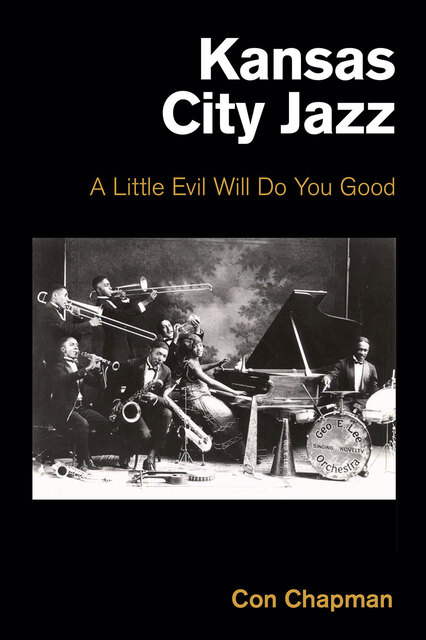Chapman/Kansas City Jazz, 6. Riffs and Jams

Full description
The culture of Kansas City jazz grew out of the late-night (and early morning) jam sessions that bar and nightclub owners used to provide music at a low cost to their patrons. “Jamming” was a term born in the circus sideshows where musicians blew freely and without orchestration, improvising in a competitive environment against other musicians. Jam sessions in turn generated “riff” tunes; that is, spontaneous compositions based on phrases that emerged from the mind of one musician, and were picked up and repeated by others in the ensemble, then combined into with other phrases to make a musical whole. A highly-rhythmic piano style known as “boogie-woogie” developed in the Southwest, emerging from the small “barrelhouse” bars where music was provided in a rude setting only by a piano at first, with drummers added as the style developed. The foremost practitioner of this style in Kansas City was Pete Johnson, who learned his trade at rent parties, that is, parties in residences where payments for food, drink and admission were used to pay the host’s rent. Johnson teamed up with a singer named Joe Turner, and the two would eventually make their way to Carnegie Hall under the auspices of John Hammond as a feature at his “Spirituals to Swing” concerts. Other lesser-know boogie-woogie pianists are profiled in this chapter as well.
- typeImage
- created on
- file formatjpg
- file size152 KB
- container titleKansas City Jazz: A Little Evil Will Do You Good
- creatorCon Chapman
- isbn9781800502833 (eBook)
- publisherEquinox Publishing Ltd.
- publisher placeSheffield, United Kingdom
- rightsEquinox Publishing Ltd.
- series titlePopular Music History
- doi
We use cookies to analyze our traffic. Please decide if you are willing to accept cookies from our website. You can change this setting anytime in Privacy Settings.
